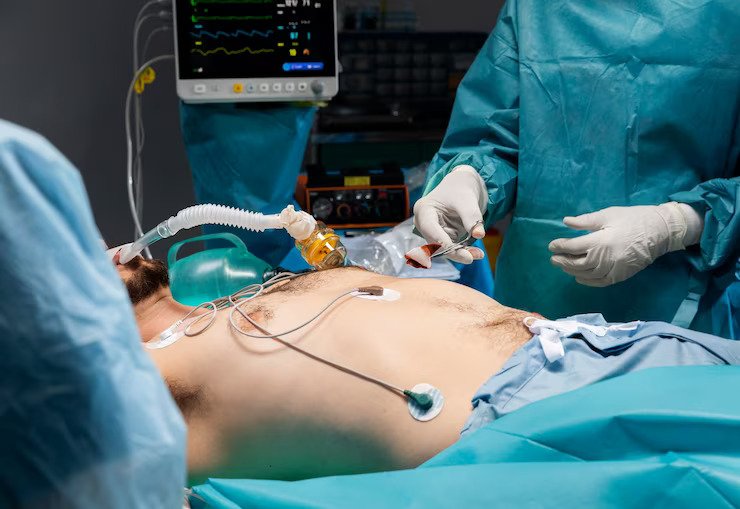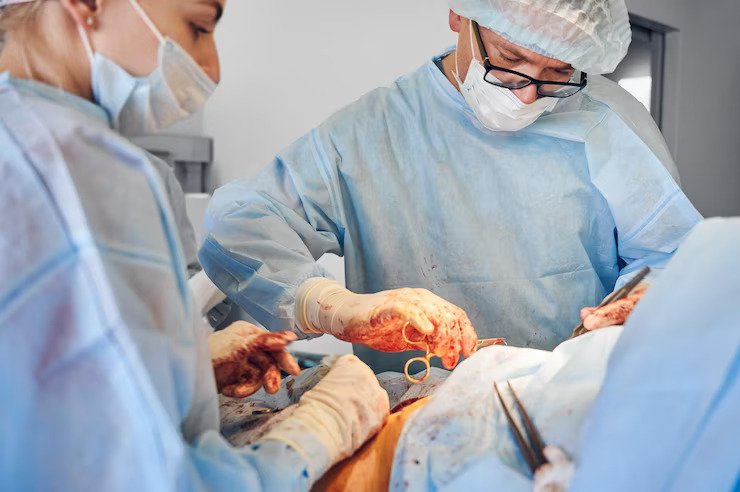Transabdominal Preperitoneal Patch Surgery: A Comprehensive Guide
Transabdominal preperitoneal patch surgery, also known as TAPP surgery, is a minimally invasive surgical procedure used to treat various medical conditions. It involves repairing hernias and reinforcing weakened areas in the abdominal wall.
This article will provide a comprehensive guide to transabdominal preperitoneal patch surgery, including its benefits, the recovery process, and potential complications.
Understanding Transabdominal Preperitoneal Patch Surgery
Transabdominal preperitoneal patch surgery is performed to repair hernias, such as inguinal, femoral, and ventral hernias. It is considered a minimally invasive technique involving smaller incisions and reduced tissue trauma compared to traditional open surgeries.
During the procedure, the surgeon creates small incisions in the lower abdomen. Carbon dioxide gas is then used to inflate the abdomen, creating a space between the muscles and the peritoneum (the lining of the abdominal cavity). This space allows the surgeon to access the herniated area without entering the peritoneal cavity.
A mesh patch made of synthetic material is then inserted into the preperitoneal space to reinforce the weakened abdominal wall and provide support. The patch helps prevent future hernias by closing the defect and strengthening the surrounding tissues.

Benefits of Transabdominal Preperitoneal Patch Surgery
Transabdominal preperitoneal patch surgery offers several advantages over traditional open hernia repairs. These benefits include:
1. Minimally Invasive:
TAPP surgery uses small incisions, resulting in reduced scarring, less pain, and faster recovery than open surgeries.
2. Lower Risk of Infection:
Since the procedure does not breach the peritoneal cavity, the infection risk is lower than open surgeries.
3. Less Postoperative Pain:
Patients who undergo TAPP surgery typically experience less postoperative pain and discomfort.
4. Shorter Hospital Stay:
The procedure’s minimally invasive nature allows for shorter hospital stays, with many patients being discharged on the same day.
5. Quicker Return to Normal Activities:
Recovery time is usually shorter, and patients can resume regular activities sooner than traditional open hernia repairs.
Recovery Process
After transabdominal preperitoneal patch surgery, patients are closely monitored in a recovery area. They may experience some discomfort, swelling, or bruising in the abdominal area, which is normal. Pain medication and instructions for postoperative care will be provided to manage any discomfort.
It is essential to follow the surgeon’s guidelines for a successful recovery. These guidelines may include:
A. Rest and Limit Physical Activity:
Avoid strenuous activities and heavy lifting for several weeks to allow the surgical site to heal properly.
B. Proper Wound Care:
Keep the incision site clean and dry. Follow the instructions provided by your surgeon regarding dressing changes and wound care.
C. Gradual Return to Normal Activities:
Gradually increase physical activities as advised by your surgeon. Listen to your body and avoid overexertion during the recovery period.
D. Healthy Lifestyle:
Maintain a balanced diet, stay hydrated, and refrain from smoking, as these factors can affect healing.

Potential Complications
While transabdominal preperitoneal patch surgery is generally safe, like any surgical procedure, it carries some risks. Potential complications may include:
1. Infection:
Although the risk is low, there is a possibility of developing an infection at the incision site or within the abdominal cavity.
2. Bleeding:
Excessive bleeding during or after surgery may occur, requiring additional medical intervention.
3. Mesh-related Issues:
Rarely, complications related to the mesh, such as mesh migration or mesh-related infections, may occur.
4. Nerve Damage:
There is a slight risk of nerve damage during the procedure, which may lead to numbness or altered sensation in the surgical area.
It is crucial to discuss potential risks and complications with your surgeon before undergoing transabdominal preperitoneal patch surgery.
Conclusion
Transabdominal preperitoneal patch surgery is a minimally invasive technique used to repair hernias and reinforce weakened areas in the abdominal wall. This procedure offers several benefits over traditional open surgeries, including reduced scarring, shorter recovery time, and a lower risk of infection.
However, like any surgical procedure, it carries potential risks and complications. Consulting with a qualified healthcare professional is essential to determine if transabdominal preperitoneal patch surgery is the right option for you.
Read Also:
- Gum Recession: Causes, Prevention, Surgery & Treatment
- What To Ask Yourself Before Getting Plastic Surgery
- Guide to Enjoying a Healthy Lifestyle After Bariatric Surgery



